Rome, Italy
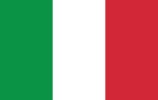
Official language: Italian; although Rome is a large tourist city so many locals also speak English.
Currency: Euro.
Where is it? Rome is in the Lazio region of central Italy on the Tiber (Tevere) river.
Must-see attractions: “When in Rome, do as the Romans do,” goes the adage. Besides eating the delicious food, visitors will want to check out the Colosseum, Trevi Fountain, Pantheon and Sistine Chapel. Wind down at Piazza Navona for some shopping, dinner and gelato, all while admiring the city’s Baroque art. And, make sure you travel a bit outside the heart of Rome to see the Vatican City.
Family-friendly tips: Gelato tasting, pizza making and gladiator school, oh my! There are plenty of great activities for kids and families throughout Italy’s capital city. Teach kids about the amazing history of the city (and world) by exploring the Colosseum and Pantheon and have them make a wish and throw a coin in the Trevi Fountain.
When to go: The off-season is from October to April and room rates are lower. While it’s cooler this time of year, it rarely dips below freezing and may be worth the smaller crowds.
Santorini, Greece

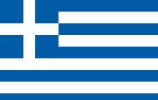
Official language: Greek; basic English also is spoken across the island.
Currency: Euro.
Where is it? Santorini is a small Greek island located in the southern Aegean Sea, southeast of Greece’s mainland.
Must-see attractions: Santorini is filled with gorgeous beaches. Kamari Beach is a black-sand beach on the island’s east side surrounded by many popular hotels, restaurants, bars and shops. And, while you may think the best wine comes from Italy and France, Santorini gives them a run for their money. Take a winery tour and taste for yourself at Santo Wines in Pyrgos. It’s the largest winery and most popular on the island.
Family-friendly tips: While Santorini is more known for adult getaways, there are plenty of activities for kids, including lots of great swimming spots! When you’re finished cooling off, hop aboard a volcanic boat tour where you can get up close to the crater of an active volcano, swim in volcanic hot springs and enjoy dinner on the boat while cruising around the island.
When to go: You’ll want to visit Santorini between late April and early November for the best temperatures and least amount of rain.
Reykjavik Capital Area, Iceland

Official language: Icelandic.
Currency: Icelandic króna; there’s a bank an ATM at the airport to easily exchange any money, since many banks outside of Iceland do not carry Icelandic króna.
Where is it? Reykjavik is the capital and largest city in Iceland. Located in the southwestern part of the country, it’s where most visitors base themselves.
Must-see attractions: Around 40 minutes by car or bus from Reykjavik, the Blue Lagoon geothermal spa is one of the most visited attractions in Iceland. The sulfur- and silica-rich water has many benefits, including age-defying healing powers. Be sure to pre-book your entrance ticket, and smother your face in the silica mud mask, located in the lagoon. The main attraction in Iceland, however, is the Northern Lights (Aurora Borealis). The best way to see the lights in the city is to find the darkest place possible and wait for your eyes to adjust. Grotta lighthouse, located on the Seltjarnarnes Peninsula in the most north-western point of the capital, has very little light pollution.
Family-friendly tips: Many tour companies offering whale watching and puffin spotting tours, which can be extremely fun for little ones. There also are family-friendly museums, like the National Museum of Iceland, where you can learn everything there is to know about Vikings!
When to go: If you’re looking for warm(ish) temperatures, visit May through September. Although, the best time to see the Northern Lights is between November and early March.
Berlin, Germany
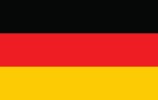
Official Language: German.
Currency: Euro.
Where is it? Berlin is in northeastern Germany on the banks of the Spree and Havel rivers.
Must-see attractions: History lovers should make sure Berlin is on their bucket list. Check out Museum Island, home to Berlin’s most important museums, including the Neues (new) Museum, Pergamon Museum, Bode-Museum, Alte Nationalgalerie (Old National Gallery) and Altes (old) Museum. For more somber history, pay your respects at the Holocaust Memorial or walk through Checkpoint Charlie, the best-known Berlin Wall crossing point between East Berlin and West Berlin during the Cold War. Now home to the Mauer Museum, the site features fake border guards and exhibitions relating to the tales of escapees.
Family-friendly tips: There’s an abundance of places in Germany to take your kids and teach them about world history. Teach them about the Holocaust at the Anne Frank Museum, or keep it light at the Deutsches Technisches Museum. If you’re little ones love video games, take them to the newer Computerspiele Museum, the first in the world dedicated to computer games including interactive exhibits, reconstructed arcade games and more.
When to go: Germany’s biggest tourist season is from mid-April through mid-October. If you’re hoping to experience Oktoberfest, it runs late September through early October.
Oslo, Norway
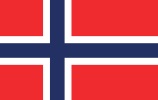
Official Language: Norwegian.
Currency: Norwegian Kroner.
Where is it? The capital of Norway, Oslo is in the southeast portion of the country.
Must-see attractions: A few of Oslo’s most-visited attractions include the Holmenkollen Ski Museum and Tower – which can be found beneath the famous ski jump – the Norwegian National Opera & Ballet, the Viking Ship Museum and TusenFryd Amusement Park. Akershus Fortress is a great place to learn about Oslo’s history with guided tours of the famous medieval castle. When in Norway, you must explore the fjords, long, narrow, deep inlets of the sea that snake between high cliffs. The Nutshell route from Oslo to Bergen will give you an amazing view of the beautiful countryside.
Family-friendly tips: With plenty of museums, parks and even a train ride through the fjords, Oslo is a great family destination. Take time to check out Frogner Park with more than 200 sculptures focused on human interactions and relationships; it’s a great stop in between museum visits. Teach your kids about important history and history-makers at the Nobel Peace Center in the heart of Oslo.
When to go: The warmest months in Oslo are May through August, and you’ll experience nearly 24 hours of daylight.
Vancouver, BC, Canada
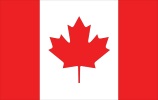
Official language: English.
Currency: Canadian dollar.
Where is it? Vancouver is the largest city in the Province of British Columbia on the west coast of Canada.
Must-see attractions: Stanley Park is the largest urban park in North America and should be at the top of every tourist’s list. Whether you’re looking to do something active, sightsee or eat, the park is filled with miles of trails, the Vancouver Aquarium, boat tours and more. If you’re looking for something a bit more thrilling, check out Capilano Suspension Bridge Park, where you can walk across the 450-foot bridge, 230 feet above the Capilano River.
Family-friendly tips: While there’s plenty for families to do at Stanley Park, other great attractions for families include the H.R. Macmillan Space Centre, Vancouver Lookout, Science World and “walk across Canada” at Canada Place.
When to go: The best time to visit Vancouver is April through October when you’ll experience warmer temperatures and drier weather. However, if you’re into winter sports, Vancouver is worth checking out November through March.